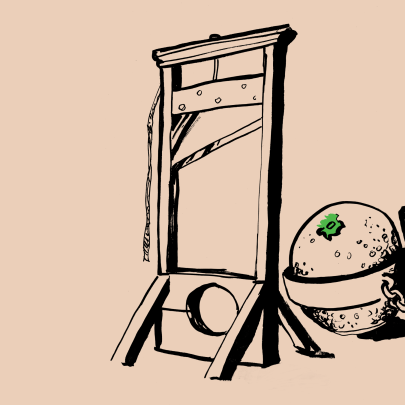Jan 18, 2016 Politics
Inconvenient Facts About Assisted Suicide
By Matthew Jansen, Secretary of The Care Alliance
Graham Adams, in Lecretia Seales: the backlash begins, sets out his case for legalising euthanasia and assisted suicide.
Along the way he made some comments about people who disagree. For example, he wrote that it was an “outrageous red herring” for me to point out in a media release that the Dutch organisers of a conference which Matt Vickers is due to speak at are campaigning for everybody over 70 to have access to a ‘suicide pill’ as of right.
I do not agree that it is a red herring, let alone outrageous, and I am grateful to have the opportunity to explain why.
Who’s who
A standard tool of euthanasia advocates is to describe anyone who disagrees with them as (in the words of the Lecretia’s Choice Facebook page last November) “fringe conservative groups and the more hardline religious groups”.
The Care Alliance is a very broad-based coalition. Our palliative care members are professionally ferociously dedicated to not giving two hoots about anyone’s faith or political status. They are simply interested in caring for the dying person and their whanau.
While we have some faith-based members, we never argue the issue from a faith perspective. We simply wouldn’t be able to agree amongst ourselves what the hell it was.
Our other members include disability advocates, medical groups, social policy advocates, and the single-issue Euthanasia-Free New Zealand. We are Quakers and Catholics and Protestants and Buddhists and agnostics and atheists. Our “usual” politics range from left to right, major to minor, and everywhere in between.
Fair to say that we disagree about everything except this one simple, essential thing: there is a better response to a person’s suffering than killing the person.
Disagreeing is not attacking
The Euthanasia 2016 conference is being organized by the Dutch Right to Die Society (NVVE) and the World Right to Die Societies (WRtDS). All the international groups share resources and ideas to advance the practice of euthanasia and assisted suicide around the world, and the secretary of WRtDS is also the secretary of the New Zealand Voluntary Euthanasia Society.
What they think and how they operate should be of real interest to all New Zealanders if David Seymour’s End of Life Choice Bill is pulled from the Parliamentary ballot.
Mr Vickers’ attendance at the conference is significant as he has become, by force of circumstance, New Zealand’s highest profile advocate of assisted suicide.
Like everybody else I was moved by the evident deep love between Matt Vickers and Lecretia Seales. That true emotion is something to be celebrated and honoured, and another reason for her early death to be mourned.
What it doesn’t mean is that I have to agree with Ms Seales or Mr Vickers that state-sanctioned euthanasia and assisted suicide is the right response to suffering.
In fact, I disagree strongly. For me, personally, the key issue is our youth suicide epidemic. For others it will be the impact on disabled people, or our shockingly bad record of elder abuse, or our stretched mental health services.
The facts matter
Mr Adams asserted that there “is simply no evidence” that euthanasia “would be an option frail old people would think they ought to take.”
Unfortunately there is such evidence, and rather a lot of it. Just one example from the famous 2013 judgment in Fleming v Ireland:
[Professor Hicks] went on to give some specific examples of instances of coercion and abuse recorded in the medical literature in respect of both Oregon and the Netherlands in the aftermath of the liberalisation of assisted suicide legislation. Case 3 in her Table 2 was in the following terms:
“Case 3: The Netherlands: A wife who no longer wishes to care for her sick, elderly husband gives him a choice between euthanasia and admission to a nursing home. Afraid of being left to the mercy of strangers in an unfamiliar place, he chooses euthanasia. His doctor ends his life despite being aware that the request was coerced.”
Mr Adams also wrote that “There are many effective safeguards built into assisted dying legislation in jurisdictions around the world”. Again from the Fleming judgment:
“it was not in dispute that in 2005 – the year for which the latest data is available for the Netherlands – 560 patients (some 0.4% of all deaths) were euthanized without having given their explicit consent.”
About the polls
Mr Adams cited two polls in his article that showed 75 and 71 percent of New Zealanders support ‘assisted dying’. He did not cite David Seymour’s own poll which put support at 66 percent.
Nor did he reference the 2013 poll in Quebec which showed that 27 percent of people thought that “medical aid in dying” meant palliative care. No, it’s a euphemism of choice for euthanasia advocates.
The really interesting surveys last year were the Research New Zealand polls taken immediately before and after Seales v Attorney-General. They showed an 11 percent decline in net support for assisted suicide in just three months.
Drugs affect people differently
Mr Adams is correct that controlling pain is not completely effective in all cases all the time.
Baroness Finlay, in her affidavit in Seales, noted one reason for this:
“in cancer patients I have found that patients with severe complex pain that did not appear to respond to pain relief intervention, there was an underlying cause that had not previously been diagnosed. In some cancer patients, reinvestigation revealed the site of a previously unknown metastatic deposit, amenable to targeted radiotherapy, surgery, chemotherapy or local injection.”
Another reason for variation in pain management is that every body is different, and a drug that works well for one person may not work at all for another. That’s true for therapeutic drugs just as it is for pain relief drugs.
It’s also true for the drugs used in euthanasia and assisted suicide. In Oregon, for example, 22 people are known to have regurgitated the lethal drug, 6 people are known to have regained consciousness after ingestion, and the longest recorded time between ingestion and death is 104 hours. More worringly, that is only what is known: there are no records of what happened in nearly 40 percent of cases.
The palliative care approach is to understand suffering as multidimensional – physical, emotional, social, spiritual – and to address all aspects simultaneously. That requires first, last and always listening carefully to the person and responding to them as a unique individual.
Words matter
As Mr Adams noted, Mr Seymour’s End of Life Choice Bill would provide euthanasia or assisted suicide for “mentally competent adults with a terminal illness likely to be fatal within six months, or suffering an irremediable condition in an advanced state of decline”.
It sounds almost plausible, until you start thinking about the definitions of those words, and how they work together. (And you can imagine how lawyers are just going to love debating them.)
For example, what does “likely to be fatal within six months” mean? A 99 percent chance or just a 51 percent chance?
Illness prognosis is notoriously unreliable. Baroness Finlay again:
Although the average, median and range of life expectancy across a population with a condition can be stated, it is impossible to predict where an individual’s life expectancy lies within this range; there are always exceptional cases, where individuals live longer (sometimes very much longer). Over years of clinical practice I have come to realise that the only honest answer to the question ‘How long have I got?’ is ‘I honestly cannot tell’.
That gets a little closer to home if you recall that when Ms Seales was diagnosed with a brain tumour in 2011 she was told “there was a risk I could go into a coma and die within the next few weeks.”
When you combine the bill’s definitions of “mentally competent” with “irremediable” and add in the phrase that Mr Adams omitted – “unbearable suffering that cannot be relieved in a manner that he or she considers tolerable” – you have a recipe for state-sanctioned assisted suicide on demand by just about everyone.
Is that a reasonable balance of the risks and benefits? Is it better than the alternatives? Is it what you thought you were supporting?
That’s what this debate is about. Let’s do it.





